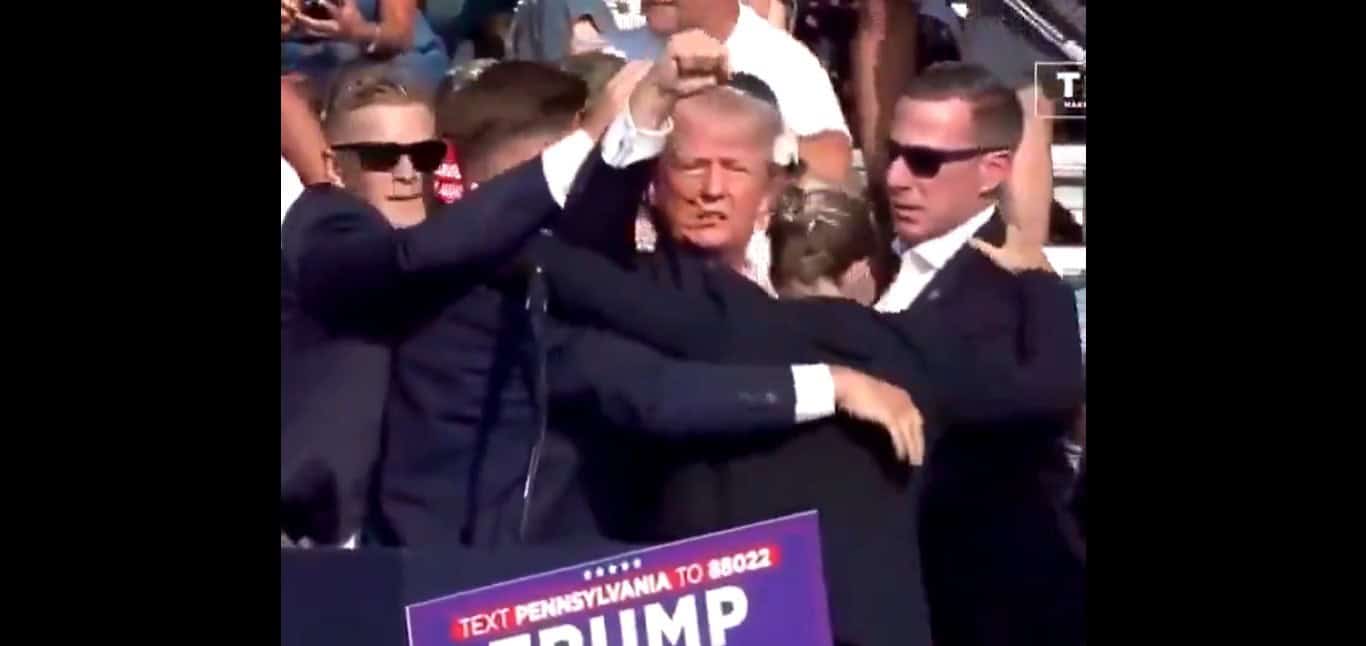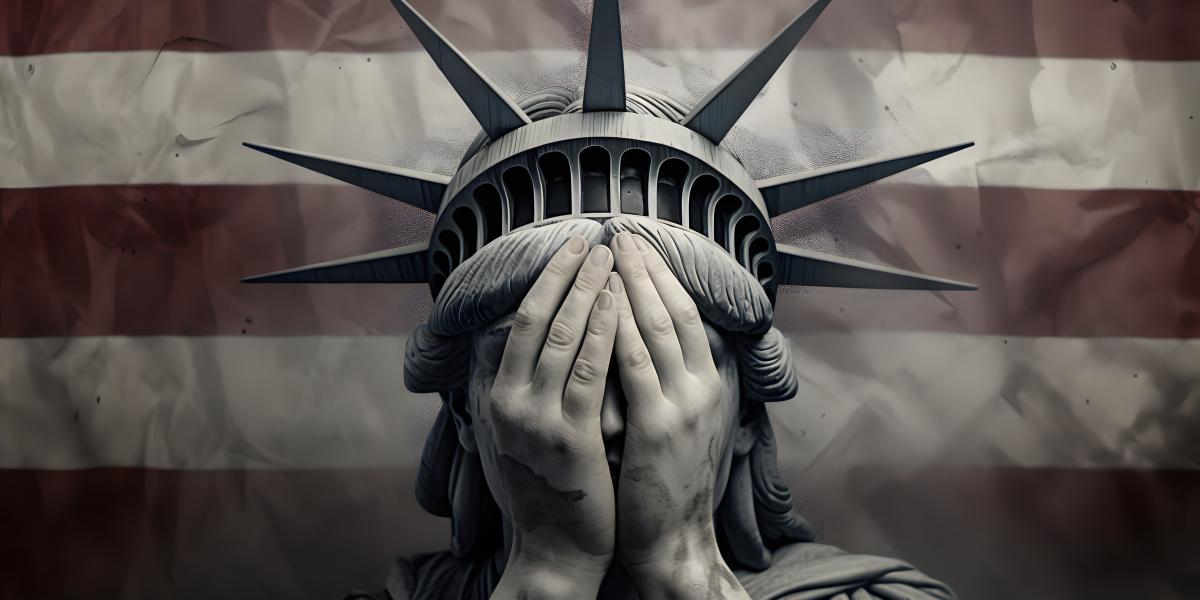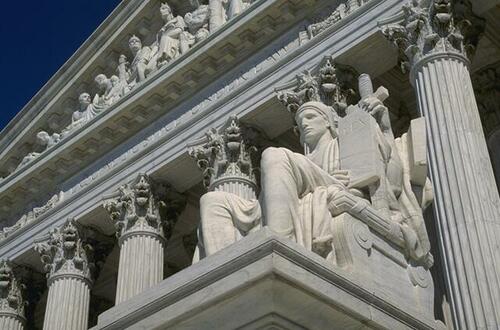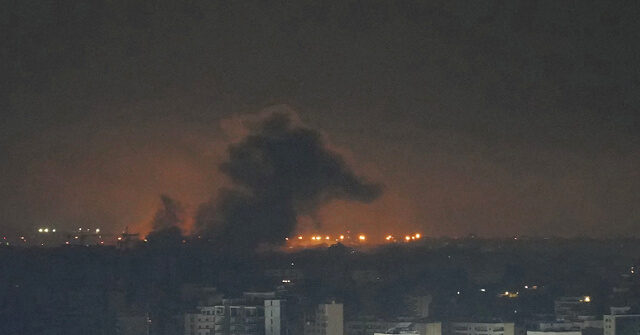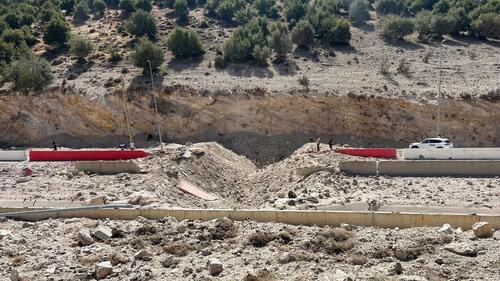‘Bullet for democracy’: Trump returns to site of rally shooting
Donald Trump will make a defiant return Saturday to the small town in Pennsylvania where an assassin tried to shoot him dead during a rally attended by thousands of supporters. The former president will appear alongside J.D. Vance, his running mate in the November election, as well as family members of those hurt in the […]
The post ‘Bullet for democracy’: Trump returns to site of rally shooting appeared first on Insider Paper.
Mises’s Framework Still Sets the Standard
As we wade through the intricacies of modern society, it becomes all the more imperative to go back to the works of Ludwig von Mises. Mises remains not only relevant…
The Presumption of Liberty
Progressives claim that the state grants us our rights, and that liberty can flourish only in the presence of a powerful state. The truth runs in the opposite direction.
Your Kids Are Already Communists, and College Will Make It Worse
The only critical thinking in modern academia that stands out, is criticisms of capitalism—real and imagined.
New Title IX: 37 Words in 1972; Now Over 400 Scary Pages Long
When passed in 1972, Title IX was hailed as a way to ensure women on college campuses received equal treatment to males. Today‘s Title IX is a bureaucratic nightmare, eviscerating due process of law and creating a tyrannical atmosphere on campus.
Will The Supreme Court Decide That Religious Charter Schools Are Unconstitutional?
Will The Supreme Court Decide That Religious Charter Schools Are Unconstitutional?
Authored by William Jeynes via RealClearEducation,
Recently, I was on a 3-person panel discussion and debate at Harvard University’s Kennedy School of Government. We were asked to address the question of whether religious charter schools are constitutional. We also shared how we thought the U.S. Supreme Court would rule. This issue has risen to the forefront of educational debate largely because of the U.S. Supreme Court Carson v. Makin (2022) case and an effort in Oklahoma to found a religious charter school, St. Isadore of Seville Catholic Virtual School
In 2023-2024. However, one should note that these developments did not launch the momentum to rule in favor of religious charter schools, but they built on earlier debates and statements from prior cases including Justice Stephen Breyer’s question in the Espinosa vs. Montana Department of Revenue (2020) case, asking about religious charter schools. Bill Clinton’s speech in 1995 in Vienna, Virginia stating that past U.S. Supreme Court decisions regarding faith were misinterpreted has also played an important role in the debate on religious charter schools.
The Carson v. Makin (2022) case, based in Maine, played a major role in increasing the momentum for religious charter schools. In that case, the state of Maine had provided vouchers for a good number of parents who desired to send their children to non-religious private schools. In contrast, however, Maine’s government did not provide these vouchers for parents who wished to send their children to religious private schools. In a decision penned by Chief Justice Roberts, the U.S. Supreme Court voted 6-3 that the Maine voucher program was unconstitutional because it discriminated against faith-based schools.
As important as the Carson v. Makin (2022) case is, there remain three issues that the U.S. Supreme Court needs to address in any decision on the constitutionality of religious charter schools. First, are religious charter schools constitutional? Second, to what degree may state governments impose restrictions on religious private schools that may inhibit their religious freedoms or beliefs? For example, Adam Frey, the Attorney General of Maine, clarified the state of Maine’s policy following the Carson v. Makin (2022) decision. Frey declared that in order for any private school to participate in the voucher program, it had to agree to follow Maine’s Human Rights Act. The question that the U.S. Supreme Court needs to answer is to what extent states may initiate such actions. How far is it legally permissible for them to go? Where does one draw the line?
The third issue that the U.S. Supreme Court must address is that it needs to determine whether those who run charter schools are state or private actors. This is because the vast majority of people who run charter schools are private groups. However, these charters are defined by law as public schools and are supported by tax-payer dollars. If the Court rules that those who operate the charter schools are state actors, then because they must be non-sectarian, religious charter schools will be ruled unconstitutional. However, if the Court rules that charter schools are private actors, then religious charter schools will be ruled constitutional.
The problem is that determining whether those who run charter schools are state or private actors will not be easy. This is because the courts have often disagreed with each other in their conclusions. For example, the Ninth Circuit Court of Appeals in 2010 (in Caviness v. Horizon Community Learning Center), determined that charter schools were private actors when it came to firing educators. That is, no state hearings were necessary. The case is likely particularly salient, because it cited a U.S. Supreme Court case, Rendell-Baker v. Kohn (1982). This case involved a private school that was very similar to a charter school. It was created to help kids really struggling in school and received about 90% of its funding from the government. The U.S. Supreme Court also found the school to be a private actor in the case of an employee being fired. The Court might view the Rendell-Baker v. Kohn (1982) case as the pivotal one in terms of helping establish precedent for its eventual decisions on religious charter schools, in part because it is a U.S. Supreme Court case. However, in a 2022 Fourth Circuit Court of Appeals case (Peltier v. Charter Day School), regarding school dress codes, the ruling was that those who ran charter schools were state actors.
Whether the Court will utilize the St. Isadore of Seville Catholic Virtual School case to address these issues or wait for a future case remains to be seen. Nevertheless, given that Carson v. Makin (2022) and Justice Breyer’s 2020 statement have brought this issue to the forefront, one can foresee a scenario in which one may not have to wait long.
During the panel discussion, I opined that the U.S. Supreme Court will likely eventually rule that religious charter schools are constitutional. I did not give a precise timeline regarding when such a ruling might take place. Nevertheless, the other two academics on the panel agreed with my prediction, one of whom was a well-seasoned Harvard law professor.
Almost as salient as the issue of whether religious charter schools are constitutional is the context the U.S. Supreme Court establishes in their decision. The U.S. Supreme Court will either provide a narrow context for its decision or a broader one. An example of a narrow context would be declaring that religious charter schools are constitutional, but the Court will leave it up to the states to determine the degree of implementation. An example of a broader context would be if the U.S. Supreme Court decides that if a state has charter schools, it must at least offer the possibility of having religious charter schools.
Whatever the Court decides, it will have a substantial long-term impact on schools and society. If the court decides that religious charter schools are constitutional, one result is that will like give families more options in terms of choosing schools for their children. According to David Tyack in his book, The One Best System, the American system of schooling is far too monolithic and the historical trend toward increased centralization is not consistent with the nation’s diversity. In the next several years the nation will discover whether the U.S. Supreme Court agrees.
Tyler Durden
Fri, 10/04/2024 – 23:25
U.S. to Give $157 Million in Humanitarian Aid to Address ‘Crisis in Lebanon’
The United States announced that it would be providing $157 million in humanitarian aid to address the “crisis in Lebanon” and those who have been affected by it.
The post U.S. to Provide $157 Million in Humanitarian Aid to People Affected by ‘Crisis in Lebanon’ appeared first on Breitbart.
Main Lebanon-Syria Border Crossing Destroyed In Israeli Attack
Main Lebanon-Syria Border Crossing Destroyed In Israeli Attack
The Masnaa border crossing between Lebanon and Syria was severely damaged by an Israeli airstrike early on Friday, forcing the road to close and leaving those fleeing to cross on foot.
Videos circulating on social media show the aftermath of the strike and the destruction it caused. Displaced Lebanese and Syrians can be seen trekking by foot across the border.
Masnaa is the primary border crossing between Lebanon and Syria.
The Israeli army claimed in a statement that it struck a 3.5-kilometer underground tunnel crossing from Lebanon into Syria. It says it is working to stifle the flow of weapons from Iran via Syria to Hezbollah in Lebanon.
Israel’s air force bombed “an underground tunnel that crosses the territory of Lebanon into the territory of Syria, about 3.5 kilometers long, and which is used by Hezbollah to transfer weapons and store them in an underground route,” the Israeli army said in a statement on 4 October.
The statement also announced the assassination of Mohammad Jaafar Qasir, who it said was the head of Hezbollah’s Unit 4400 that allegedly operated the targeted tunnel.
It added that it “will continue to attack and destroy any infrastructure for smuggling weapons.”
Since late last month, Israel has been waging a massive and deadly aerial campaign across Lebanon, including its capital, Beirut. At least one million have been displaced and around 2,000 killed since September 20, with the death toll on a continuously rapid rise.
Dozens of loud explosions rocked Beirut’s southern suburb just past midnight on Thursday as Israel unleashed another round of massive and destructive airstrikes. Several neighborhoods were reported destroyed as a result of the attacks.
Israeli 🇮🇱 airstrike has cut a main highway linking Lebanon 🇱🇧 with Syria 🇸🇾, first time this major border crossing has been cut off since the beginning of the war, footage by @JamilBassil
Friday’s airstrike led to the closure of a road near the Masnaa Border Crossing, from… pic.twitter.com/iT45ZynCS9
— Saad Abedine (@SaadAbedine) October 4, 2024
Hebrew and western media cited Israeli sources as saying that Hashem Safieddine was the target of the main attack on the suburb.
Safieddine is the cousin and likely successor to Hezbollah Secretary-General Hassan Nasrallah, who was assassinated on September 27 when Israel dropped over 80 bunker buster bombs and leveled around 10 buildings in Beirut’s southern suburb.
Tyler Durden
Fri, 10/04/2024 – 23:00

